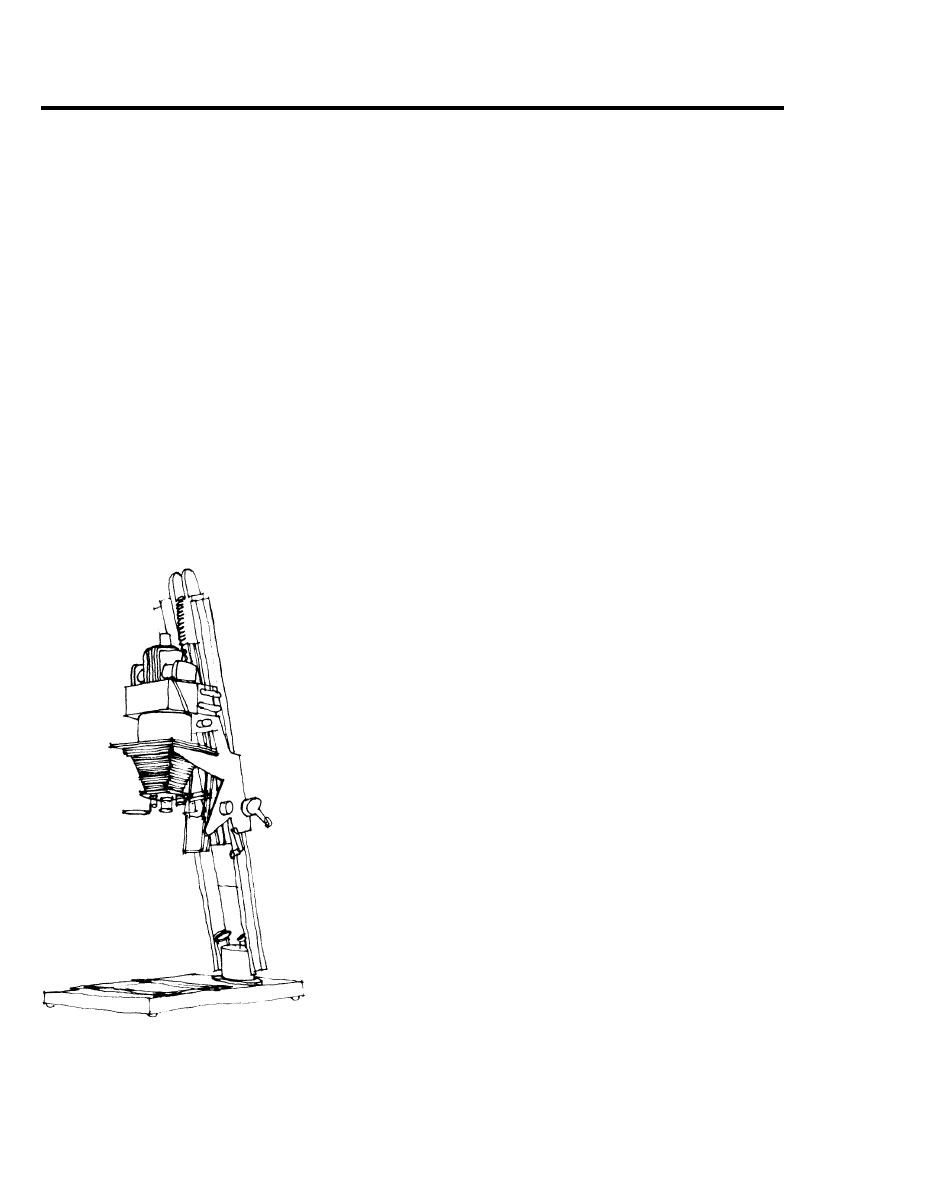
Page 38
DG 1110-3-124
August 1976
a. A C T I V I T I E S
3-8 Photography
(1) Basic processes of photography remain the same
although there are wide differences in sophistication of
equipment, techniques of still and motion pictures, and
variations between monochromatic and color film. Film
processing consists of loading, developing, enlarging, print
washing, drying, trimming, and mounting. Other elements
of the center's photography program include studio work,
film and slide projection, demonstrations, classroom
instruction, and exhibits.
(2) There are three basic functional areas in a photog-
raphy department: the studio/classroom/gallery which
may be shared with the other craft activities; the photo-
graphic laboratory where film processing takes place; and
the finishing work area where prints are dried, trimmed
and mounted. The photographic laboratory should be
divided into two separate areas when both monochroma-
tic and color film are processed.
b.
PARTICIPANTS
Photography is one of the most popular activities in
the
Army arts and crafts program. This size of facility
will
accommodate a maximum of 50 participants at any
one
time: 25 users and one or two staff members in
the
studio/classroom/gallery with a similar number in the
lab-
oratory and finishing area.
c.
PHYSICAL
REQUIREMENTS
(1) The studio/classroom/gallery is a multi-use area that
should be designed with flexibility in mind. For use as a
portrait studio, it should have effective light control
at windows to bar extraneous light. An adjacent closet for
storing chairs, props and equipment is desirable, as is a
pull-down screen for projection. When used as a gallery,
continuous wall tracks and wall systems for hanging dis-
plays reduce special exhibit requirements and simplify
hanging backdrops for portrait use. A chalkboard should
be included for instruction. A folding partition adds to
the flexible use of this space. Ceilings should be designed
to allow for spotlights to be attached for illuminating
(2) The photo lab encompasses all activities of film proc-
essing. It starts with film loading which takes place in
totally dark cubicles. The monochromatic film processing
darkroom is used with safe lights, but conventional color
film processing requires a separate darkroom with total
darkness. However, recent advances in color films will un-
doubtedly reduce Ilght safeguard requirements. A red glass


 Previous Page
Previous Page
